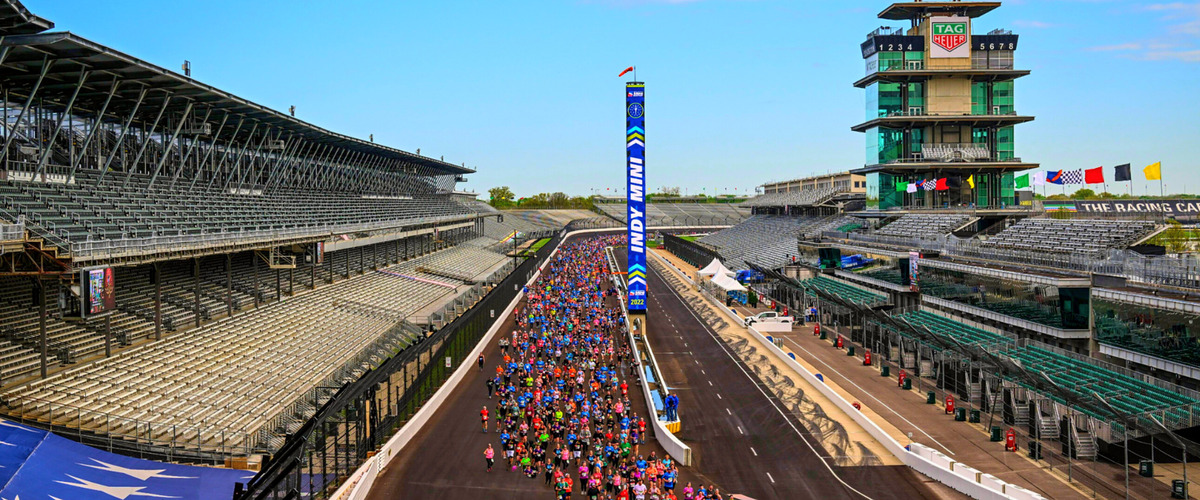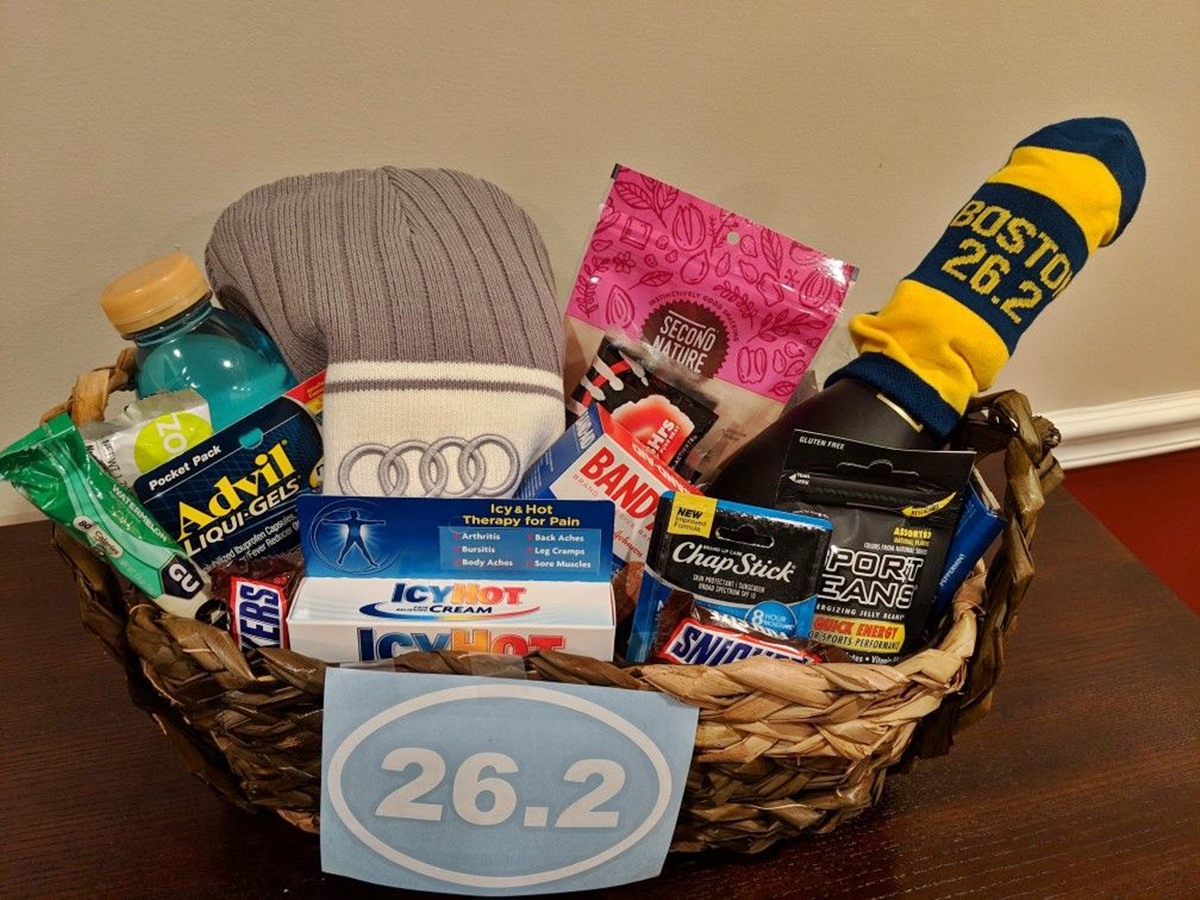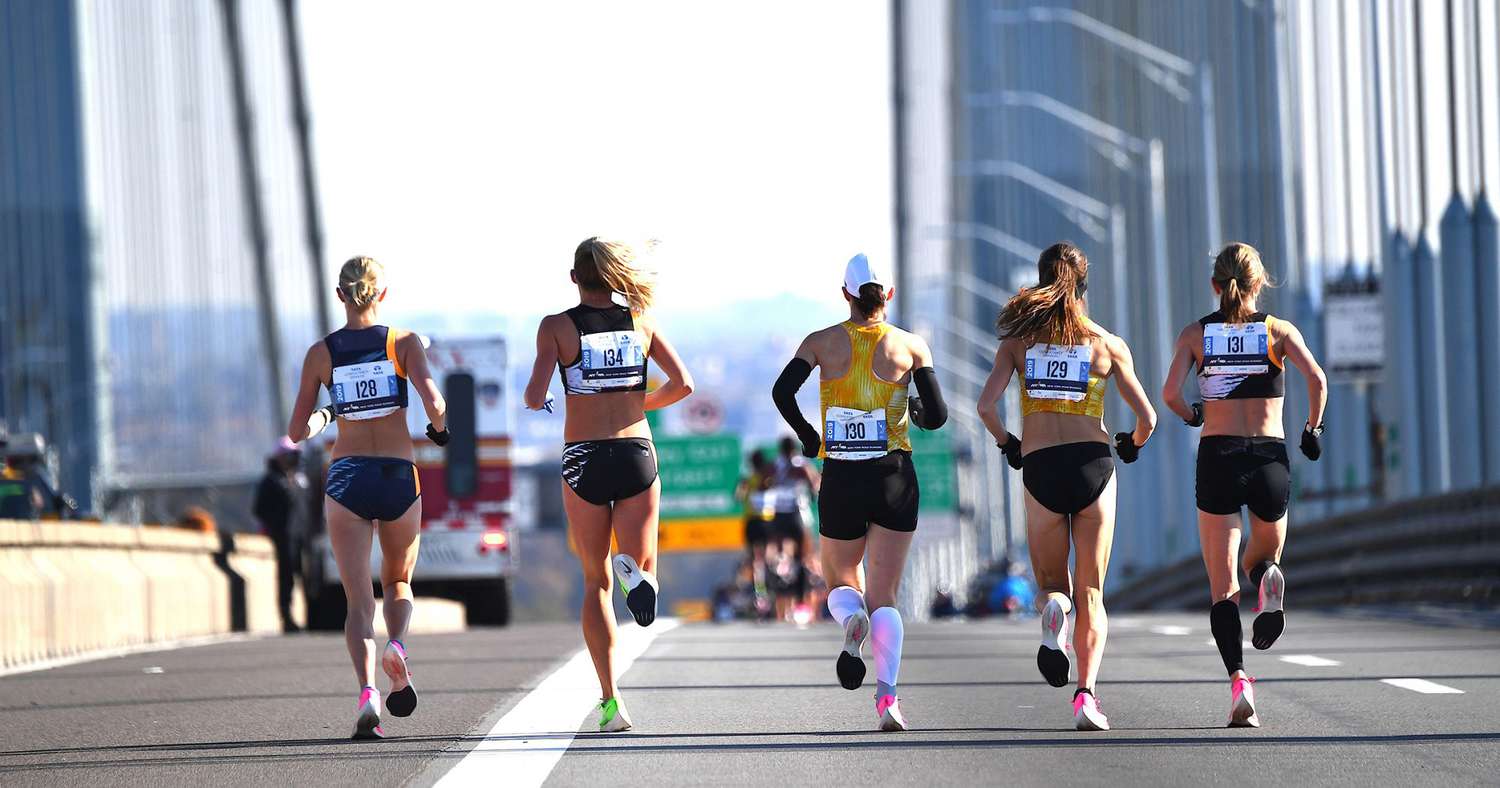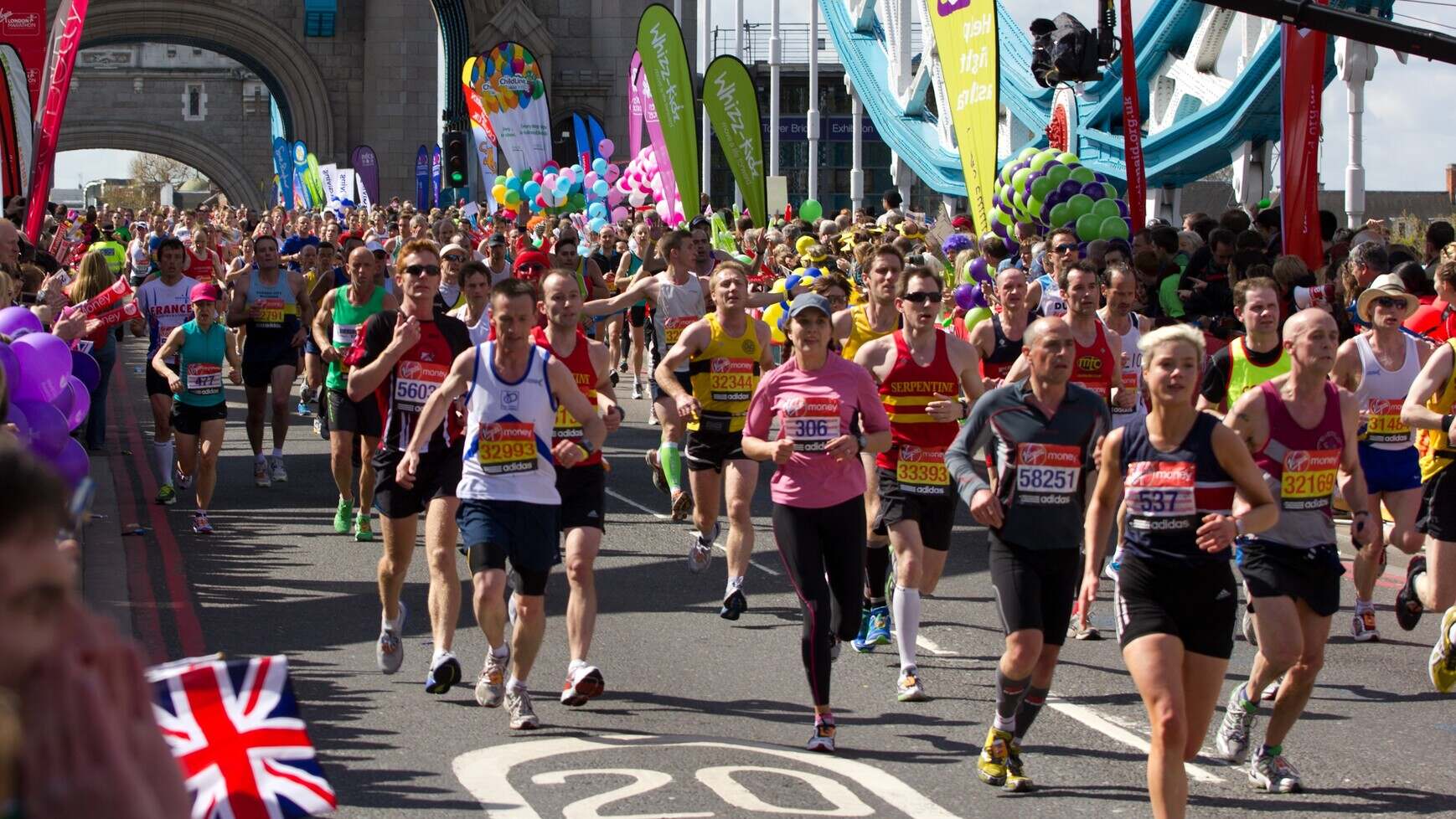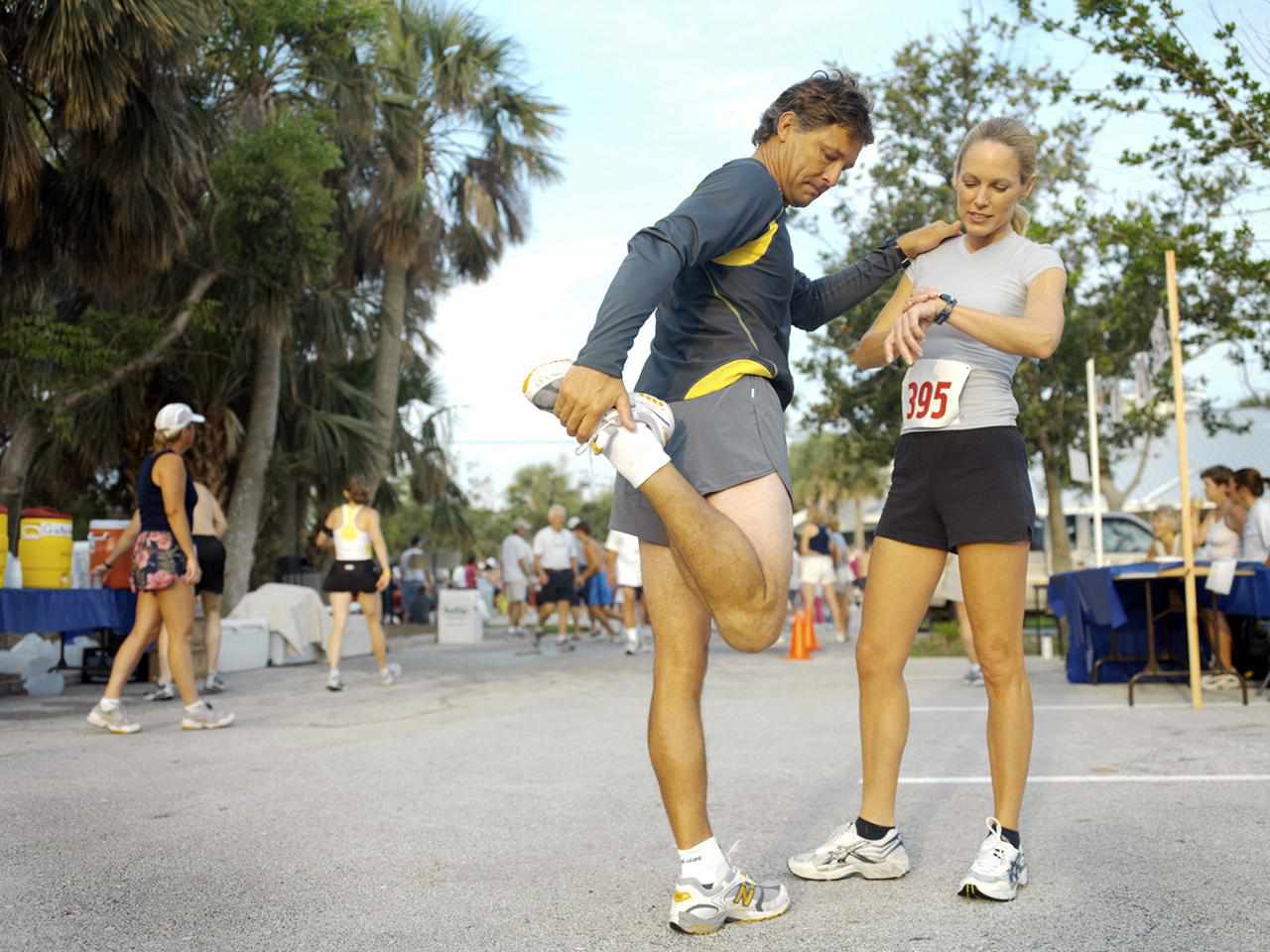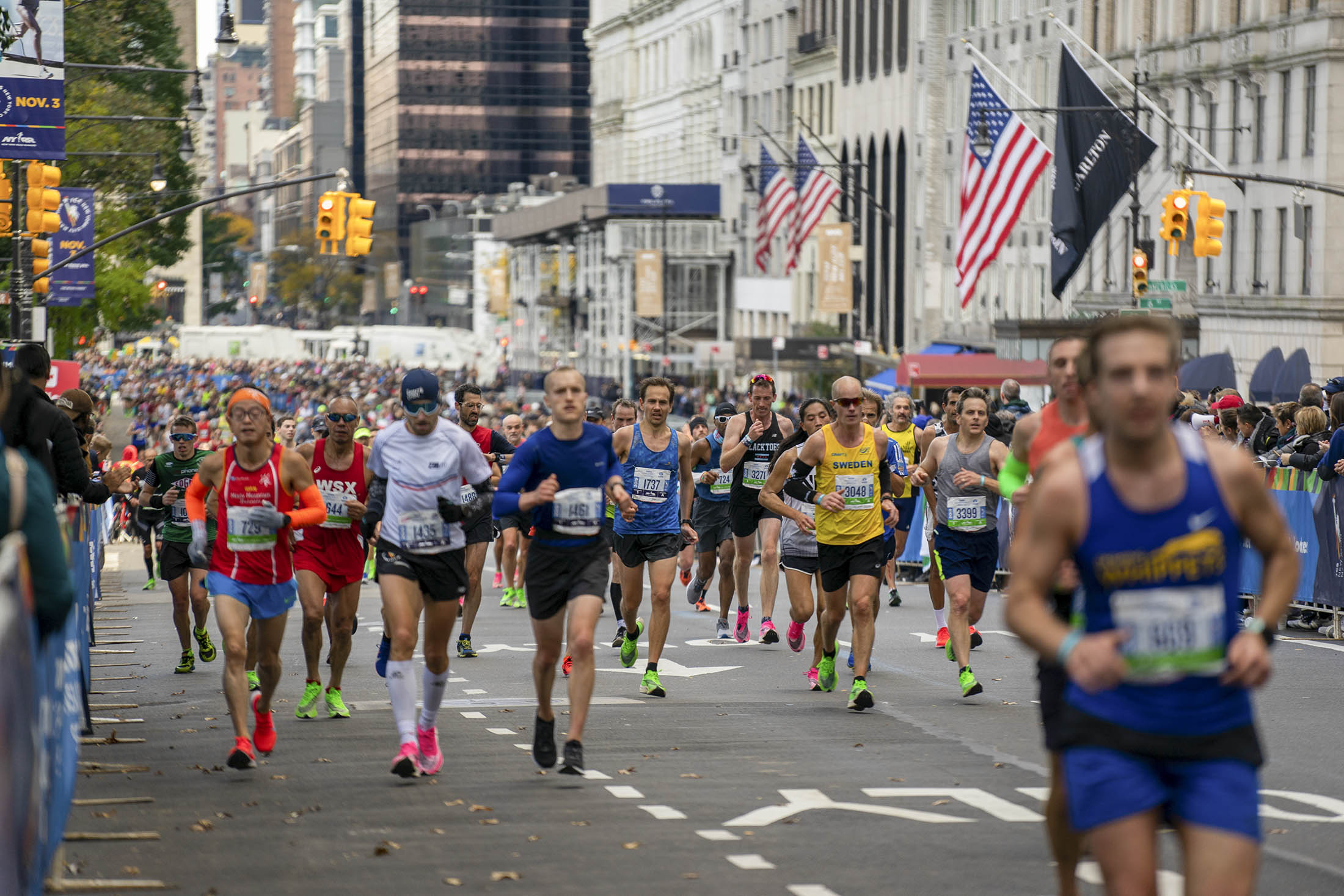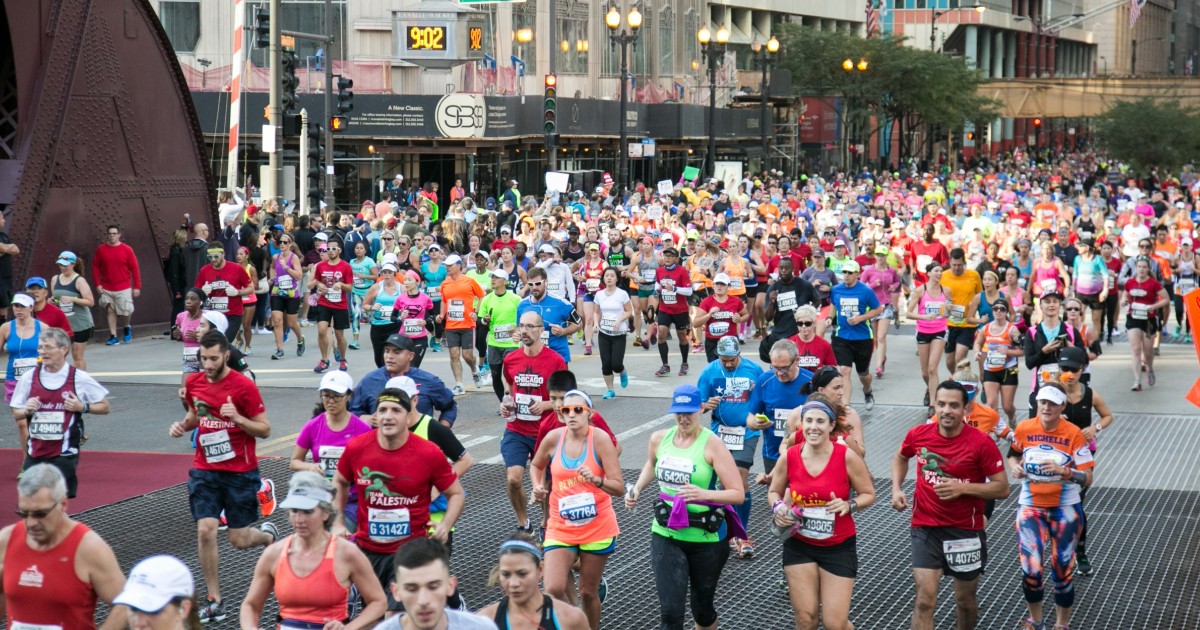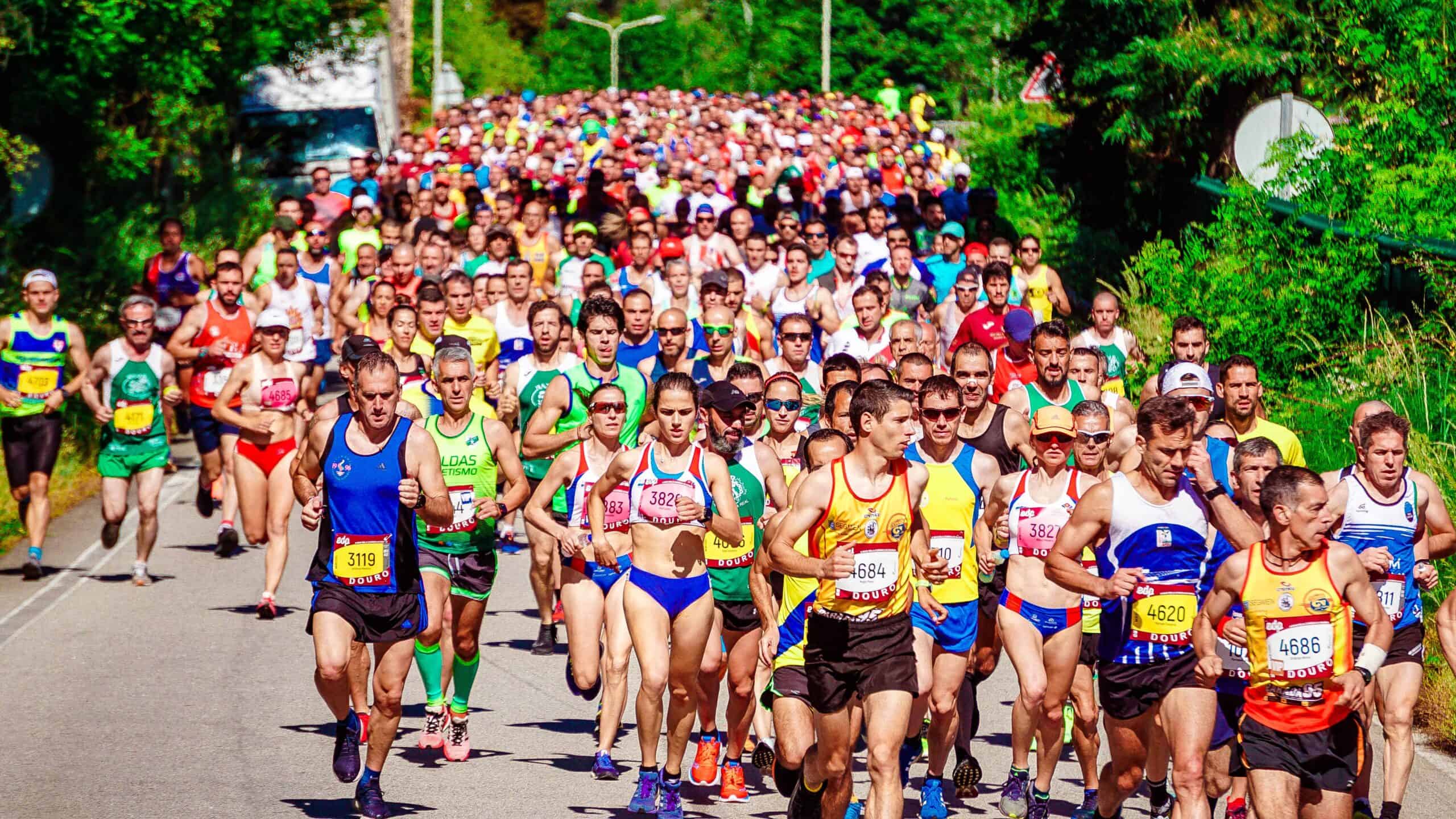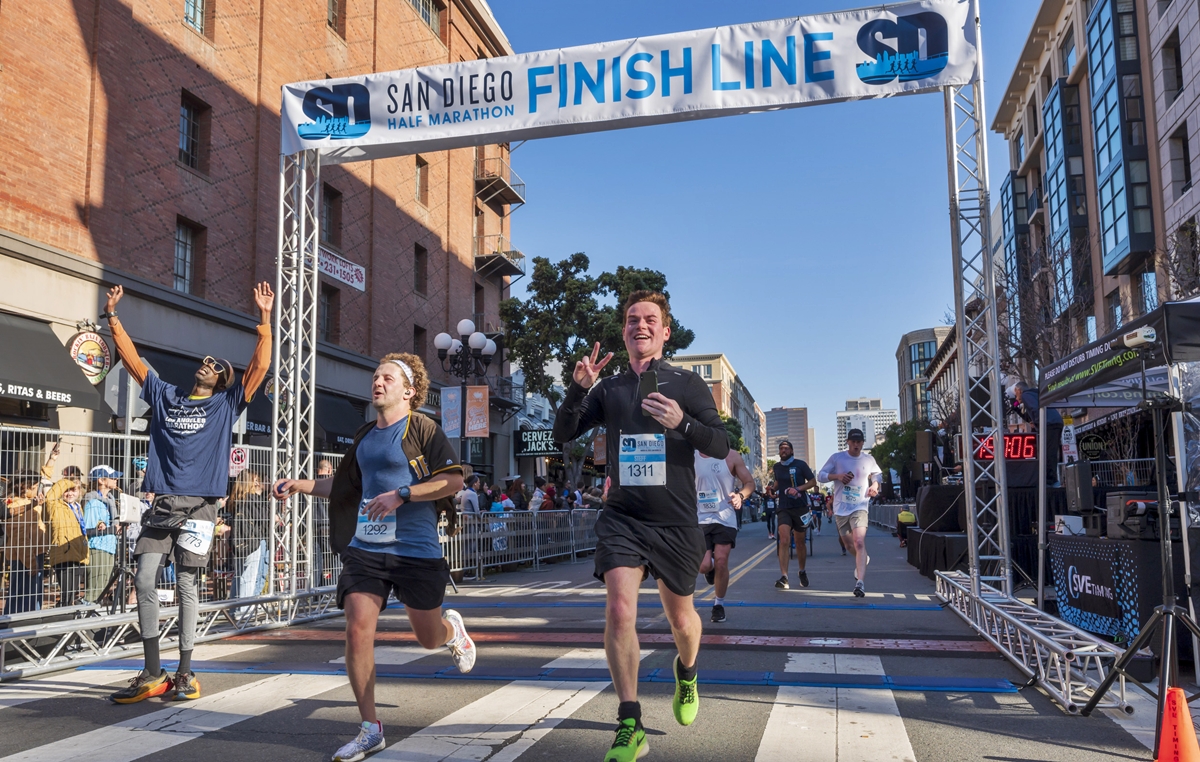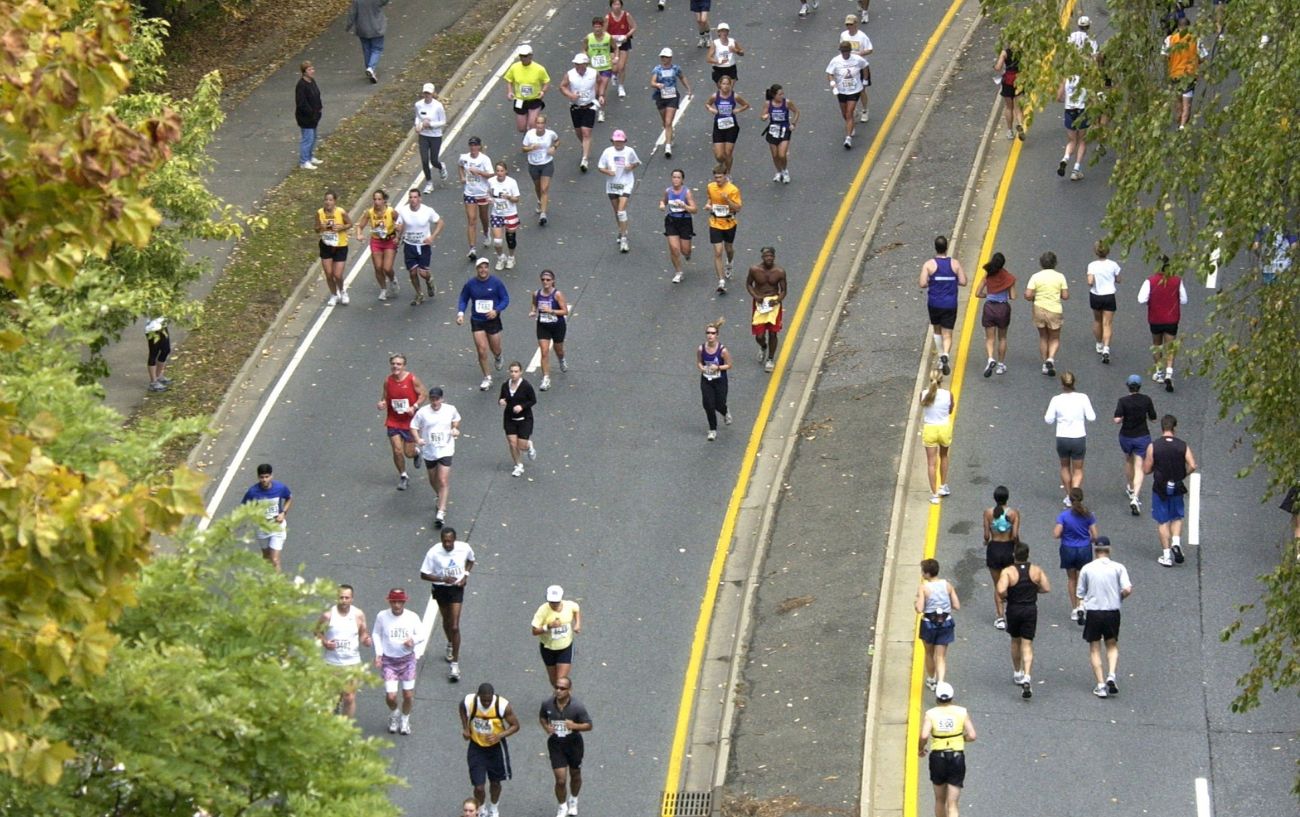

Featured
How To Track Marathon Runners
Modified: January 22, 2024
Learn how to track featured marathon runners with our comprehensive guide. Stay informed and never miss a moment of the race!
Introduction
Tracking marathon runners has become an essential part of the race experience for both participants and spectators. It allows friends and family to monitor the progress of their loved ones, and it provides runners with valuable data about their performance. With the advancement of technology, there are now various tracking methods available to make this process easier and more accurate.
From GPS tracking devices and mobile apps to RFID technology and timing mats, there are numerous ways to track marathon runners. Each method has its own advantages and limitations, but they all aim to provide real-time information about the runner’s location and progress. In this article, we will explore the different tracking technologies, popular tracking apps, and how to utilize these tools to track marathon runners effectively.
Whether you are a runner looking to improve your race strategy or a spectator cheering on a friend or family member, understanding the options available for tracking marathon runners can greatly enhance your overall experience. So let’s dive into the world of marathon tracking and discover the most effective ways to stay connected and informed!
Types of Tracking Technologies
Tracking technologies have revolutionized the way we monitor marathon runners. These technologies provide real-time information about a runner’s location, pace, and overall progress. Let’s explore the different types of tracking technologies commonly used in marathon races:
- GPS Tracking Devices: GPS tracking devices have become increasingly popular for tracking marathon runners. These small devices use satellite technology to accurately track a runner’s position and transmit the data to a central system. GPS tracking devices are typically worn on the wrist or attached to a runner’s clothing or shoes. They provide real-time tracking and can also record other data such as distance covered, speed, and elevation.
- Mobile Apps: With the widespread use of smartphones, mobile apps have become a convenient and accessible tracking option. Many marathons now offer their own tracking apps that allow participants and spectators to track runners in real-time. These apps use GPS technology to provide live updates on a runner’s location and progress. Some apps even provide additional features such as tracking multiple runners, sending notifications, and displaying interactive maps of the race route.
- RFID Tracking: Radio Frequency Identification (RFID) is another popular tracking technology used in marathons. RFID chips are embedded in a runner’s race bib or shoe tag. As the runner passes through designated RFID reader checkpoints along the race route, the chip is detected and the runner’s time is recorded. This technology provides accurate and automated timing data for each participant.
- Timing Mats: Timing mats are placed at various points along the race route, usually at the start, finish, and key split points. These mats work in conjunction with the RFID chips to record a runner’s time as they cross over the mat. Timing mats provide precise timing information and can be used to calculate split times and track a runner’s progress throughout the race.
- Tracking Services: Besides the technologies mentioned above, there are also tracking services offered by third-party companies. These services often utilize a combination of GPS, RFID, and timing mat technologies to provide comprehensive tracking solutions. They may offer additional features such as live tracking maps, social media integration, and detailed race analytics.
Each tracking technology has its advantages and limitations, but they all aim to provide accurate and real-time tracking information for marathon runners. In the following sections, we will delve deeper into how to utilize these technologies to track runners effectively.
GPS Tracking Devices
GPS tracking devices have revolutionized the way we track marathon runners. These small and lightweight devices use satellite technology to accurately determine a runner’s location and transmit the data in real-time. Let’s take a closer look at the benefits and functionalities of GPS tracking devices in marathon races:
Accuracy and Precision: GPS tracking devices provide highly accurate and precise location data. They use multiple satellite signals to triangulate a runner’s position, ensuring that the displayed information is reliable and up-to-date. This allows spectators and race organizers to track runners with confidence.
Real-time Updates: GPS devices offer real-time tracking capabilities, enabling friends, family, and race organizers to monitor runners’ progress as it happens. This is especially valuable for long-distance races like marathons, where participants and spectators are often separated by extensive distances along the race route.
Data Recording: In addition to tracking a runner’s location, GPS devices can also record valuable race data such as distance covered, speed, pace, and elevation changes. This information can be analyzed post-race to gauge a runner’s performance and identify areas for improvement.
Compact and Portable: GPS tracking devices are typically small and lightweight, designed to be easily worn or attached to a runner’s clothing, shoes, or gear. They do not interfere with a runner’s movement or performance, allowing them to focus solely on their race.
Compatibility and Integration: Many GPS tracking devices are compatible with various fitness apps and platforms, allowing runners to seamlessly integrate their tracking data with other health and fitness metrics. This makes it easier for runners to analyze their performance holistically and set personalized goals for future races.
Battery Life: One crucial consideration with GPS trackers is battery life. It’s essential to choose a device that has a battery capacity that can last the duration of the marathon. Some devices offer extended battery life or even the option to swap out rechargeable batteries to ensure uninterrupted tracking.
Overall, GPS tracking devices have become a preferred choice for marathon runners and spectators alike. They provide accurate and real-time tracking data, allowing for a more immersive and interactive race experience. Whether you’re a runner striving for personal improvement or a loved one cheering from the sidelines, GPS tracking devices offer valuable insights and enhance the overall marathon experience.
Mobile Apps
In the era of smartphones, mobile apps have become an increasingly popular and convenient method for tracking marathon runners. These apps utilize GPS technology to provide real-time updates on a runner’s location and progress. Let’s delve into the benefits and features of using mobile apps for marathon tracking:
Live Tracking: One of the primary advantages of mobile apps is the ability to track runners in real-time. Spectators can simply download the app and search for the runner’s bib number or name to receive live updates on their progress along the race route. This feature allows friends and family to stay engaged and informed throughout the entire marathon.
Interactive Maps: Many marathon tracking apps offer interactive maps that display the race route, the runner’s current location, and even nearby points of interest. This feature allows spectators to visualize the race and follow the runner’s journey along the course.
Notifications and Alerts: Mobile apps often come equipped with push notifications and alerts, allowing spectators to receive automatic updates on their selected runners. These alerts can include milestones reached, changes in pace, and estimated finish times, keeping spectators well-informed and engaged throughout the race.
Multiple Runner Tracking: Some mobile apps allow users to track multiple runners simultaneously. This is particularly valuable for spectators who may have family or friends participating in the marathon. With this feature, they can monitor the progress of all their loved ones in one convenient app.
Social Media Integration: Many marathon tracking apps also integrate social media platforms, allowing runners to share their progress and achievements with their online network. This feature not only boosts motivation but also enhances the sense of community and support among participants, spectators, and the wider running community.
Race Information and Results: In addition to tracking capabilities, mobile apps often provide useful race information such as event details, race schedules, and participant profiles. They may also display official race results, allowing users to see where their tracked runners placed in their respective categories.
Accessibility and Convenience: Mobile apps are easily accessible and can be downloaded onto smartphones or tablets. This means spectators can track runners from anywhere, whether they are at the race venue, at home, or even on the go. The convenience of mobile apps makes it a popular choice for those who want to stay connected throughout the marathon.
Overall, mobile apps have revolutionized the way we track marathon runners. With their real-time updates, interactive maps, and personalized notifications, these apps provide an engaging and immersive tracking experience. Whether you are a spectator or a runner, using a mobile app can enhance your marathon experience and keep you connected every step of the way.
RFID Tracking
RFID, or Radio Frequency Identification, technology has become a popular method for tracking marathon runners. This tracking system utilizes RFID chips that are embedded in a runner’s race bib or shoe tag. Let’s explore the benefits and functionality of RFID tracking in marathon races:
Automated Timing: RFID tracking offers automated and precise timing capabilities. As runners pass through designated checkpoints equipped with RFID readers, the chip is detected, and the runner’s time is recorded. This eliminates the need for manual timing and ensures accurate and reliable race results.
Easy Setup: With RFID tracking, runners simply attach the provided race bib or shoe tag with the embedded RFID chip. There is no need for additional equipment or devices, making the setup process quick and hassle-free.
Accurate Data Capture: RFID chips provide precise and instantaneous data capture. They accurately record a runner’s time as they cross each checkpoint, allowing for accurate split times and performance analysis.
Unobtrusive and Lightweight: RFID chips are lightweight and unobtrusive, ensuring minimal interference with a runner’s performance. The race bibs or shoe tags can be comfortably attached without hindering a runner’s movement or causing discomfort.
Scalability: RFID tracking is highly scalable, making it suitable for races of all sizes, from local marathons to major international events. The system can handle a large number of participants, ensuring smooth and reliable race timing and tracking for all runners.
Reliability and Consistency: With RFID tracking, there is minimal risk of inaccurate or missed timing. The technology provides reliable and consistent data capture, giving both runners and race organizers peace of mind knowing that their times are accurately recorded.
Post-Race Analysis: RFID tracking systems allow for comprehensive post-race analysis. Race organizers can easily generate reports and analyze data such as average times, historical trends, and performance statistics. This information can be invaluable for improving future races and providing a better experience for participants.
Overall, RFID tracking has become a trusted and widely used method for monitoring marathon runners. Its automated timing, ease of setup, accurate data capture, and scalability make it an efficient and reliable tracking solution. Whether you are a race organizer ensuring accurate results or a runner seeking precise timing and performance analysis, RFID tracking is a technology that enhances the marathon experience for all involved.
Timing Mats
Timing mats are essential components in marathon races for accurately capturing and recording a runner’s time. These mats utilize advanced technology to provide precise timing data at specific points along the race route. Let’s explore the benefits and functionalities of timing mats in marathon tracking:
Precise Timing: Timing mats are strategically placed at the start, finish, and key split points of the marathon. As runners cross over these mats, their times are recorded with precision. This allows for accurate split times, overall race times, and the ability to compare performance at different stages of the race.
Automated Timing: Timing mats work in conjunction with RFID chips or other timing devices to automate the timing process. As runners pass over the timing mat, their transponders or bibs are read, and the precise time is captured automatically. This eliminates the need for manual recording and minimizes the chances of human error.
Instantaneous Results: Timing mats provide instantaneous timing results. As soon as a runner crosses over the mat, their time is recorded and displayed in real-time. This allows spectators, race organizers, and the runners themselves to have immediate access to accurate timing data.
Split Times and Progress Tracking: Timing mats are strategically positioned at predetermined points along the race route, allowing for split times to be recorded. Split times provide valuable information about a runner’s performance at different stages of the race. Runners can use this data to adjust their pacing and assess their progress towards their race goals.
Competitive Analysis: Timing mat data allows race organizers to generate comprehensive race reports and analyze the performance of individual runners, age groups, and overall participant trends. This information can be used to identify course records, determine winners, and make improvements for future races.
Accurate Participant Tracking: Timing mats provide accurate and reliable participant tracking throughout the race. As runners pass over each timing mat, their progress is recorded and tracked throughout the entire course. This allows friends, family, and race organizers to monitor each runner’s position and progress in real-time.
Enhanced Race Experience: The use of timing mats adds a layer of professionalism and accuracy to the marathon race experience. Runners can trust that their times are accurately captured, and spectators can follow the race and cheer on their favorite runners with confidence.
In summary, timing mats play a crucial role in providing accurate and automated timing data for marathon runners. Their precision, instantaneous results, and the ability to track progress and analyze performance make timing mats an essential component in delivering a successful and enjoyable marathon event.
Tracking Services
In addition to individual tracking technologies, there are also tracking services offered by third-party companies for marathon events. These services combine various tracking technologies to provide comprehensive tracking solutions. Let’s explore the benefits and functionalities of tracking services in marathon races:
Integration of Multiple Technologies: Tracking services often utilize a combination of GPS tracking devices, RFID technology, and timing mats to offer a comprehensive tracking solution. This integration allows for more accurate and reliable tracking data, as well as a wider range of tracking options for participants and spectators.
Real-Time Tracking: Tracking services provide real-time tracking capabilities, allowing spectators and participants to monitor the location and progress of runners throughout the race. This is particularly useful for long-distance races where participants and spectators may be located at different points along the race route.
Interactive Tracking Maps: Many tracking services offer interactive tracking maps on their websites or mobile apps. These maps display the race route, the runner’s current location, and other relevant data such as elapsed time and estimated finish times. This feature enhances the spectator experience by providing a visual representation of the race and the progress of individual runners.
Detailed Runner Analytics: Tracking services often provide comprehensive post-race analysis and analytics. They can generate detailed reports and statistics, including average pace, split times, and historical performance trends. This information is invaluable for runners who want to analyze their performance and identify areas for improvement.
Social Media Integration: Tracking services may integrate with social media platforms, allowing participants to share their progress and race achievements with their friends and followers. This feature enhances the sense of community and can serve as a motivational tool for runners.
Customizable Notifications: Tracking services allow participants and spectators to set up customized notifications. These notifications can include milestone alerts, changes in pace, or when a runner reaches a specific location on the race course. Customizable notifications keep spectators engaged and informed during the race.
Enhanced Safety and Security: Tracking services can enhance the safety and security of marathon events. Race organizers can monitor the location of all participants and respond promptly to any emergencies or issues that may arise during the race.
Overall, tracking services offer a comprehensive and convenient solution for tracking runners in marathon races. By integrating multiple tracking technologies and providing real-time data, these services enhance the overall race experience for participants and spectators alike.
Popular Marathon Tracking Apps
With the increasing popularity of marathon races and advancements in technology, there are several popular marathon tracking apps available for both participants and spectators. These apps utilize GPS technology to provide real-time race tracking and other features to enhance the marathon experience. Let’s take a look at some of the most popular marathon tracking apps:
- Strava: Strava is a widely-used fitness app that offers tracking capabilities for various sports, including marathon running. It allows runners to track their distance, pace, and other metrics during the race. Strava also features a social aspect, allowing users to follow and compete with friends and other participants.
- Runkeeper: Runkeeper is another popular tracking app that provides real-time tracking, distance measurement, and personalized training plans for runners. It offers audio updates on pace and progress during the race and allows users to sync their data with other fitness platforms.
- Runtastic: Runtastic is a comprehensive fitness app that offers tracking features for various activities, including marathon running. It provides real-time tracking, audio coaching, and personalized training plans. Runtastic also offers a wide range of statistics and analysis to help runners monitor their performance.
- MapMyRun: MapMyRun is a user-friendly app that offers GPS tracking, route creation, and audio coaching for runners. It allows users to discover and share new running routes and provides detailed statistics and training plans. MapMyRun also integrates with other fitness platforms and devices.
- Strides: Strides is a running tracker app that provides simple and intuitive tracking features for marathon runners. It allows users to track distance, pace, and time, and provides audio cues for progress updates. Strides also offers goal setting and progress tracking features to help runners stay motivated.
These popular marathon tracking apps provide a range of features that cater to the needs of both participants and spectators. Whether you’re a runner looking to track your progress and improve your performance or a spectator wanting to monitor a loved one during the race, these apps offer a user-friendly interface and valuable insights to enhance your marathon experience. It’s worth exploring these apps and finding the one that best suits your needs and preferences.
How to Track Runners Using Tracking Apps
Tracking marathon runners using tracking apps is a convenient and efficient way to keep tabs on their progress throughout the race. Here are the steps to successfully track runners using these apps:
- Download a Tracking App: Start by downloading a marathon tracking app of your choice from your smartphone’s app store. Some popular options include Strava, Runkeeper, Runtastic, and MapMyRun.
- Create an Account: Once you have downloaded the app, create a user account or sign in with your existing credentials. This allows you to customize your tracking experience and access additional features.
- Add the Runner: To track a specific runner, you will need their bib number or name. Enter this information in the tracking app’s search function or the designated field provided to add them to your tracking list.
- Track in Real Time: Once the runner is added to your tracking list, you can now monitor their progress in real time. The app will display their location on an interactive map, along with additional information such as distance covered, pace, and estimated finish time.
- Set up Notifications: Many tracking apps allow you to set up notifications for specific milestones or changes in the runner’s pace. Customize your notification preferences to receive alerts when the runner reaches certain distances or achieves personal goals.
- Engage with the Running Community: Many tracking apps have social features that allow you to engage with other users and the running community. Share updates, cheer on other runners, and participate in challenges to enhance your overall marathon experience.
Remember to have a stable internet connection during the race to ensure accurate real-time tracking. It’s also important to note that the ability to track runners may depend on the app’s integration with the specific marathon event. Some events may have their own official tracking apps or provide a list of recommended tracking apps that offer seamless integration.
By utilizing tracking apps, you can stay connected with your tracked runners, track their progress, and provide support and encouragement throughout the marathon race.
How to Track Runners Using RFID Technology
RFID (Radio Frequency Identification) technology offers a reliable and efficient method for tracking marathon runners. Here’s how you can track runners using RFID technology:
- Attach RFID Tags: Prior to the race, runners are provided with RFID tags in the form of race bibs or shoe tags. Make sure each runner is wearing or attaching the RFID tag according to the event’s instructions.
- Set Up RFID Reader Checkpoints: Along the race course, RFID reader checkpoints are strategically placed. These checkpoints are equipped with RFID readers that detect the unique identification number embedded in each runner’s RFID tag as they pass by.
- Record Runner Data: As runners cross each RFID reader checkpoint, their identification numbers are captured and recorded. This data is then used to track their progress and calculate their official race times.
- View Runner Data: Race organizers and spectators can access the runner data captured by RFID readers through a web-based platform or specialized software. This allows real-time monitoring of the runners’ progress and provides accurate information on their current location along the race course.
- Check Timing and Split Times: RFID technology enables precise timing data. By logging the exact moment runners cross each RFID checkpoint, it becomes possible to accurately calculate split times at various intervals throughout the race.
- Provide Results: Post-race, the data collected by RFID technology is used to generate official race results. These results typically include each runner’s overall time, split times, and placement in their respective categories.
It’s important to keep in mind that the effectiveness of RFID tracking may depend on factors such as the range and positioning of the RFID readers, as well as the proper attachment and visibility of the RFID tags on the runners. Local race organizers or event staff can provide specific instructions on how to best utilize RFID technology for tracking runners in a particular race.
By utilizing RFID technology, marathon organizers can accurately track runners’ progress, provide real-time data updates, calculate split times, and ultimately deliver accurate race results. RFID technology enhances the overall race experience by ensuring precise tracking and timing for all participants.
How to Track Runners Using Timing Mats
Timing mats are an essential tool for tracking marathon runners and capturing their precise race times. Here’s a step-by-step guide on how to track runners using timing mats:
- Place Timing Mats: Race organizers strategically position timing mats at various points along the race route, such as the start, finish, and intermediate split points. These mats contain sensors that record the exact moment a runner crosses over them.
- Attach Timing Chips: Prior to the race, runners are provided with timing chips, usually attached to their race bibs or shoe tags. It’s crucial for each runner to properly attach the timing chip according to the event’s instructions.
- Cross Timing Mats: As runners pass over the timing mats, the sensors detect the timing chip’s unique identification number. This data is recorded and used to measure the runner’s precise start time, finish time, and split times at various intervals.
- Monitor Progress: Race organizers and spectators can access the data collected by the timing mats in real-time through a web-based platform or specialized software. This allows for continuous monitoring of each runner’s progress and provides accurate information on their current location and pace along the race route.
- Calculate Split Times: Timing mats allow for the calculation of split times – the time it takes for a runner to complete specific sections of the race. By comparing the data recorded at different timing mats, race organizers and participants can analyze performance at various stages of the marathon.
- Generate Race Results: After the race, the data collected by the timing mats is used to generate official race results. These results typically include each runner’s overall time, split times, and placement in their respective categories. The precise data collected by the timing mats ensures fair and accurate results.
It is important for both runners and race organizers to ensure that the timing chips are securely attached and properly activated before the race begins. Additionally, runners should be informed of the locations of the timing mats along the race course to ensure they cross each mat.
The use of timing mats enhances the accuracy and reliability of tracking marathon runners’ times. It allows for real-time monitoring of progress, precise calculation of split times, and the provision of accurate race results, contributing to an enhanced overall marathon experience.
Benefits of Tracking Marathon Runners
Tracking marathon runners provides a wide range of benefits for both participants and spectators. Let’s explore some of the key advantages of tracking marathon runners:
- Real-Time Progress Updates: Tracking allows spectators and supporters to receive real-time updates on a runner’s progress throughout the race. This helps them plan their movement and be at specific locations to cheer on their loved ones.
- Motivation and Support: Knowing that their progress is being tracked can greatly motivate runners to push harder and keep up their pace. The support from spectators, who can monitor their progress and provide encouragement along the race route, can be immensely uplifting.
- Improved Race Strategy: Tracking marathon runners offers valuable information about their pace and progress, enabling them to make necessary adjustments to their race strategy. By analyzing their split times, runners can fine-tune their performance and optimize their chances of reaching their target finish time.
- Enhanced Safety and Security: Tracking technologies like GPS and RFID enable race organizers to monitor the location of all participants. In the event of an emergency or injury, organizers can quickly respond to ensure the safety and well-being of the runners.
- Insightful Data Analysis: The data collected from tracking can provide valuable insights for race organizers, participants, and trainers alike. Analyzing split times, average pace, and performance trends can help identify strengths, weaknesses, and areas for improvement.
- Better Race Experience: Tracking marathon runners enhances the overall race experience for both participants and spectators. It adds an interactive element by allowing supporters to actively engage with the race, offering support, and cheering on their loved ones.
- Bonding and Community: Tracking technology brings the running community together by allowing runners to connect with fellow participants and spectators through social media integration. Sharing experiences, milestones, and achievements fosters a sense of camaraderie and strengthens the running community as a whole.
- Accurate Race Results: Tracking technologies such as timing mats and RFID chips ensure accurate and reliable race results. This is crucial for awarding winners, setting course records, and providing fair competition among participants.
Overall, tracking marathon runners provides numerous benefits that enhance the race experience for everyone involved. From improving race strategy to fostering community engagement, tracking adds value to marathon events, making them more enjoyable and fulfilling for both runners and spectators.
Conclusion
Tracking technologies have revolutionized the way we monitor and experience marathon races. From GPS tracking devices and mobile apps to RFID technology and timing mats, there are various methods available to track marathon runners accurately and in real-time.
GPS tracking devices provide highly accurate and precise location data, allowing for real-time updates on a runner’s progress. Mobile apps offer interactive maps, notifications, and the ability to track multiple runners simultaneously. RFID technology integrates with race bibs or shoe tags to automate timing and provide accurate and reliable data. Timing mats allow for precise timing and can calculate split times at various locations along the race course.
The adoption of these tracking technologies comes with numerous benefits. Runners can optimize their race strategy, receive real-time support and motivation, and analyze their performance to identify areas for improvement. Spectators can actively engage in the race experience, provide support at specific locations, and celebrate the achievements of their loved ones. Race organizers can ensure accurate timing and results, enhance safety and security, and provide a seamless race experience for all participants.
In conclusion, tracking marathon runners through various technologies enhances the overall race experience. It provides valuable insights, fueling motivation and competition among runners. It creates a sense of community and support among participants, spectators, and the wider running community. With the continued advancement of tracking technologies, we can expect even more immersive and interactive race experiences in the future.
